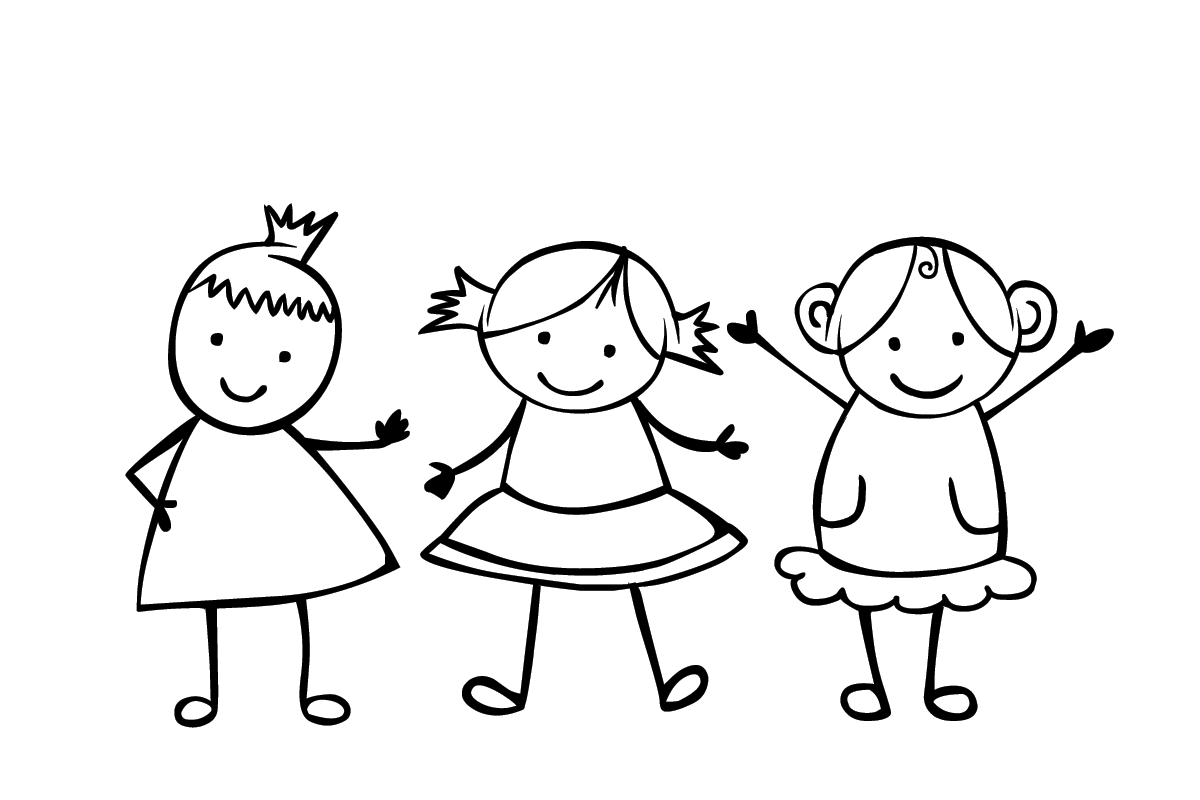How To Get Anybody Feeling Positive In A Hurry

One of the reasons we keep ourselves from starting conversations with people is we don’t know what to say. Even if we have a couple of openers, carrying on the conversation is difficult. As soon as we hit one of those uncomfortable silences, both parties start to struggle. The longer this lasts, the more the awkwardness builds.
If we start strong and sputter out, guess which part they’ll remember? They’ll remember the very last part of the conversation. This is the danger of talking and talking and talking. If you are using a very common conversational strategy, unless you are extremely extroverted and have a lot of ideas in your brain, you’ll eventually run out of ideas to talk about.
Rewire Your Instincts
Language and communication is an instinct. Anything that humans do naturally is an instinct. We learn to walk and talk before we go to school. And school is only a very recent invention. Long before school was invented, we walked and talked and learned complicated skills. Even before the invention of agriculture, younger ancient humans had to learn how to do stuff from older ancient humans.
Communication Instinct
Communication is an instinct just like eating is an instinct. Instincts work because we don’t need to know why. We only know that doing some things feels good, and not doing them feels bad. Communication is an instinct and we communicate because it feels good to do so. But how we specifically communicate is something that few people think about.
Ancient Hierarchies
Ancient humans (and to a large extent modern folks) exist in very rigid hierarchies. Without spending too much time on details, it’s much more efficient for a group of humans (couple three hundred) to exist in an accepted hierarchy than everybody being equal. That’s not a political correct thing to say, but we can imagine two tribes of people. One group that had a pretty tight, top down org-structure. And another tribe who had everybody feeling equal to everybody else.
It doesn’t take much imagination to see how the tightly structured org people would be much more efficient. But even though they had a tight org structure, it was always changing. Existing leaders got old, and there were new people being born all the time.
Communication And Hierarchy

Humans are unique in that our thoughts are likely much more complex than all the other animals. We can also put words to our complex thoughts. Many of our thoughts include plans on what should be done. And if we consider the typical needs of those who lived back in the days of hunter-gatherers, those needs were pretty simple. Getting enough food. Staying away from predators, and making sure everybody was doing and getting their share.
Communication Contests
When other animals compete to demonstrate hierarchy, they have physical altercations. Primates are different and more subtle. In the book Chimpanzee Politics, Frans de Waal showed that chimps can be very Machiavellian and play some long game cons on each other. We see humans doing the same thing. They way we humans do that is through language.
Everything Except Sports And Fighting
In all hierarchies, both past and present, all contests except sports and fighting involved talking. Talking is the main way we demonstrate dominance to work our way up the social status ladder. Since we’ve been talking for a long time, much longer than modern society, we can assume we talk the same way today as we did 50,000 years or so ago.
Sure, we use different (and a lot more) words, but the structure is the same. Human communication can be seen as a mini-social status contest. One one level, it serves to either increase, maintain, or demonstrate our social status. It may not seem like that on the surface, but on an instinctive battle, this is always present.
Idea Contests
This is the main reason few people appreciate unasked for advice. Unasked for advice is basically some goof telling us that they know how to “do it” (whatever “it” is) better than we know how to do it. How dare they! Sure, we all love advice when we ask for it, and it actually helps us. But whenever somebody decides to “help us” by giving us advice, they are presupposing they know more than we do about whatever the advice topic is on.
At it’s base, all communication has an element of this. Even friends sitting around a table having a random conversation about randomly flowing content at lunch time. On a very subtle level, the idea of a communication contest is always present. The idea that humans are instinctively hierarchical means that no two humans can share the same level of social hierarchy. Think of this as the Pauli Exclusion Principle for humans. We can’t accept that we are equal on all levels. Consider that we are all driven instinctively to demonstrate some kind hierarchy domination, however subtle.
Outside-In Structure

We can assume this structure is an outside-in structure. We are compelled to get our ideas into their heads. We can’t sit still very long and listen, we will eventually want to get our idea out there, and we feel it is just as important, or better than all the ideas presented so far. If you take a back seat to any conversation, you can see this in action.
Inside-Out Structure
On the other hand, if we use the inside out structure, it’s much more pleasant for the other person. If the outside-in structure is getting our ideas into their heads, then the inside out structure is getting their ideas out of their heads and eventually into our heads, via the shared conversation.
However, if you come fast and heavy with any inside-out style, especially with strangers, you’ll come across as a politician or a network marketer. You’ve got to go slow, and follow a few rules. But if you shut off your own ego for a few minutes, you’ll get them feeling pretty good pretty quickly.
Organic Anchors
An anchor is when you purposely create a good feeling in somebody, and anchor that feeling to a specific touch or a gesture. Then, as the theory goes, when you later use that same touch or gesture, it will create the same feeling. However, if you only “set” the anchor once, it will be pretty weak. Even Pavlov himself (the discoverer of this phenomenon) took many tries to set the anchor.
Instead of purposely creating a specific feeling, and setting it to a specific gesture or touch, just let it happen naturally. How do you do this? It will happen when you use the inside-out communication style, and use it in a specific way. You will be purposely building up good feelings. Since this will be slower and drawn out, (through an otherwise normal conversation) it will be linked, unconsciously and in their mind, to you.
This happens all the time anyway. We humans are curious in that we seem to have cause-effect generators in our brains (see more here). So when you waltz over, create some rapport, and create some good feelings through your conversational powers, they will see you as the cause for their good feelings. Which means they will unconsciously associate those good feelings with you.
How, specifically, does one do this? Thought you’d never ask!
Step One – Turn Off Outside-In Thinking

Turn off all outside-in communication impulses. Avoid the tendency to give advice or share your genius opinion. Become as curious as you can about the other person. Forget about what you want from the other person, and instead imagine that your secret goal is to find out as many fantastic things about them as possible. Paradoxically, this will give you plenty of future things to talk about.
See every conversation as providing three distinct values. One, the enjoyment of talking to another human and making them feel good. Two conversation practice that will make you a better conversationalist. And three, finding useful anecdotes you can use in later conversations.
“Hey, that reminds of me of this one guy I talked to who was a into this weird hobby…”
Step Two – Go Slow
Go slow. There’s a few goofy blogs out there that recommend asking deeply insightful questions meant to evoke powerful connections. But if you drop a question like that (What is the thing you are most embarrassed about from your childhood?) in the first few minutes of small talk, it will only work if the person is either extremely confident and extroverted or extremely into you.
In truth, those deep insightful questions are really meant to show off the intellect and insightfulness of the asker, which is most definitely not inside out. Go as slow as you can. The main purpose of all your actions (statements, body language, questions, comments, etc.) during the first few important moments of any conversation is to make it as easy and enjoyable to the other person as possible.
The only exception to this rule is if you are in a police interrogator. In that situation, the only thing you need to say is, “I’d like a lawyer, please.” And let them do the talking for you!
Step Three – Create Rapport

Create rapport. This is easy. Mirror their body language. That’s pretty much it. Once you’ve got it matched, lead them to a more open posture if they aren’t already in one. If their arms are crossed, for example, cross yours and then once you’ve mirrored them for a while, slowly uncross your arms and see if they follow. If they don’t, slowly to back to matching them. If they do, you’re golden.
How will you know? This is one of those “you’ll know it when you feel it,” kind of things. Humans are highly social animals, and we get into rapport with one another automatically. It should happen automatically. One way to see this is how you walk toward somebody on the sidewalk.
If you don’t look at them, (like you are staring at your device) you’ll almost never crash into them. Several studies have been done to show this. We humans have a built in “other person avoidance system” that keeps us from crashing into each other on busy streets.
But the moment you make eye contact, the automatic, “get into rapport with other people” will kick in. You’ll start to mirror each other. Which means it will be very hard to get out of each other’s way, since to both of you, it will be like looking in the mirror. When you go left, they go right, which is your left. Compared to the natural avoidance strategy, it’s been shown that with thousands of people walking along a single sidewalk, each one needs a very simple set of rules.
Go left, if that doesn’t work, go right, and if that doesn’t work, go left again. If the majority of people have this same set of rules, nobody will bump into each other. But once you make eye contact and start mirroring each other, everybody bumps into everybody.
Step Four – Share and Ask
This is when you start speaking. Don’t ask them anything. Don’t put them on the spot. Don’t try to impress them with your bar tricks. Make a simple statement about the environment which is absolutely true. The band is loud. The bar is crowded. The drinks are expensive. Wait for them to reply. If they reply positively, follow up with an opinion or a recent related experience. If they are still listening, ask them a simple question regarding what you just said.
“This band sure is loud, isn’t it? (wait for a nod). I used to have roommates that practiced in the garage all the time. Drove me crazy! (wait for any positive response.) Do you like live music?”
A yes or no question is usually a good idea. If they say no, and turn away, forget about them and find somebody else to talk to. Most of the time, if they say yes and look like their ready for another question, have a couple ready. Remember the goal is to make it as easy on them as possible.
Step Five – Build Up Desires

This step will take the most practice. Now you’ve successfully opened them, you can just keep repeating the same thing. Share something, offer and opinion, and then ask them a simple question. You’ll be able to tell you’re doing it right when they start giving longer and longer answers. When this happens, focus on the things they seem to enjoy talking about.
This is something that can only come with experience. There are no hard and fast rules, or any set of questions that will work. Just pay close attention to what they are saying, and keep asking for more information about some of the things they seem to enjoy talking about.
Step Six – Use The Meta Model
The meta model is a very simple question process. Whenever you hear something vague, ask for more specific information. However, it’s very easy to use this incorrectly. If you use it like a police interrogator, they’ll clam up in a hurry.
A much better technique is to look off to the side, as if you are trying to visualize what they are describing. When they get fuzzy, ask for more specific information, so you can help clarify the picture. One useful way to do this is through the either-or process, which you can read about here.
It’s very important to turn all judgement to zero when asking meta model questions. A good idea is to try to lead the conversation to a place where they are talking about something they’d like to experience in the future. Any future desire is perfect, as most of us love to talk about that kind of stuff.
Step Seven – End On A High Note

One important rule is to never wear out your welcome. Because having a positive conversation with a stranger is such a good feeling, we have the tendency to keep things going longer than we should. But if you do this, then the last thing they’ll remember about you is that you kept talking to them longer than they wanted, which will leave a sour taste in both of your brains.
Instead, leave when the conversation is peaking. Make sure they finish the thought, tell them how cool it is that they think that, and excuse yourself. The more you do this, the more you’ll associate talking to strangers with a collection of good memories. Memories that say most people like you and can’t get enough of you.
And when that becomes part of your personality, you will act and speak with much more confidence, and making people feel good because of you and your personality will become second nature.
Step Eight – Always Do A Post Game Journal
When you’re just starting, it’s important to write down what worked, and what didn’t. Learning by trial and error is the best way to learn but it’s hard to learn when all you have is your memories. Memories have a tendency to be partially false. After any interaction, even it was just a smile and a nod, write down what happened. Most importantly, write down a few things you could have said. And then imagine actually saying or doing them. Think of this as a way to program your future self.
If you make a point to practice these types of skills whenever you can, and if you are consistent, pretty soon you’ll be a very engaging and enjoyable conversationalist.
Learn More

Mind Persuasion has plenty of books and courses all designed to help you develop world class social skills and communication skills. Click the links below for more information.
Mind Persuasion Books
Mind Persuasion Courses